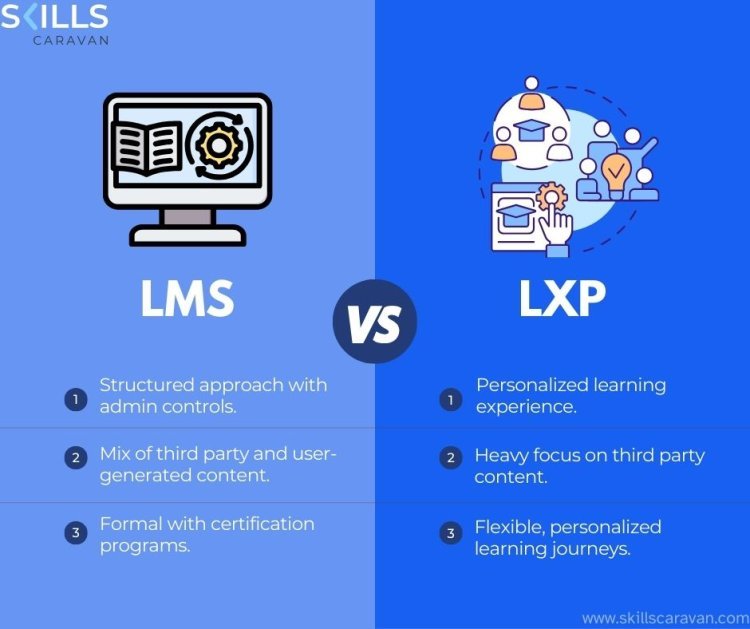Understanding the Differences: LXP vs LMS
In the realm of digital learning platforms, two key acronyms often dominate discussions: LXP (Learning Experience Platform) and LMS (Learning Management System). While both serve the purpose of facilitating learning in organizational settings, they are distinct in their approach, features, and overall focus. Understanding the differences between an LXP and an LMS is crucial for organizations looking to enhance their training and development strategies effectively.
Learning Management System (LMS)
An LMS is a robust software application designed to manage, deliver, and track educational content and training programs within an organization. Traditionally, LMS platforms are built around structured learning experiences, such as formal courses and compliance training. They excel in managing administrative tasks related to learning, such as enrollment, course delivery, progress tracking, and reporting.
Key features of an LMS include:
- Course management: Creating, organizing, and delivering courses efficiently.
- Tracking and reporting: Monitoring learner progress, assessments, and completion rates.
- Administration: Managing user enrollments, permissions, and access controls.
- Compliance and certifications: Ensuring regulatory and compliance training requirements are met.
- Resource libraries: Storing and organizing learning materials like documents, videos, and presentations.
LMS platforms are ideal for organizations seeking centralized control over training initiatives, compliance-driven learning, and structured skill development programs.
Learning Experience Platform (LXP)
On the other hand, an LXP focuses more on learner engagement, personalization, and informal learning experiences. LXPs are designed to provide a learner-centric approach, emphasizing self-directed exploration and discovery of content. Unlike the structured courses of an LMS, an LXP aggregates a wide range of learning resources, including articles, videos, podcasts, and webinars, often curated based on user preferences and behaviors.
Key features of an LXP include:
- Content curation: Recommending relevant content based on learner interests and activities.
- Social and collaborative learning tools: Facilitating discussions, knowledge sharing, and peer learning.
- Personalization: Tailoring learning paths and recommendations to individual learner needs.
- Analytics and insights: Providing detailed data on learner engagement and content effectiveness.
- Mobile-first design: Optimizing the platform for access on various devices, promoting anytime, anywhere learning.
LXPs prioritize user experience and encourage continuous learning through a variety of informal channels, fostering a culture of exploration and skill development.
Choosing Between LXP and LMS
The decision to adopt an

, or both depends on an organization's learning objectives, culture, and workforce needs. While an LMS remains vital for structured training programs, compliance, and certification, an LXP complements these efforts by promoting engagement, knowledge sharing, and personalized learning experiences.
In conclusion, the choice between an LXP and an LMS is not about one versus the other but rather about how they can work synergistically to meet diverse learning needs. Organizations looking to evolve their learning ecosystems should assess their specific requirements, considering factors such as scalability, user engagement, analytics capabilities, and overall learning culture. By leveraging the strengths of both platforms, organizations can create comprehensive and effective learning experiences that drive employee development and organizational success.
What's Your Reaction?










![Wireless Connectivity Software Market Size, Share | Statistics [2032]](https://handyclassified.com/uploads/images/202404/image_100x75_661f3be896033.jpg)



